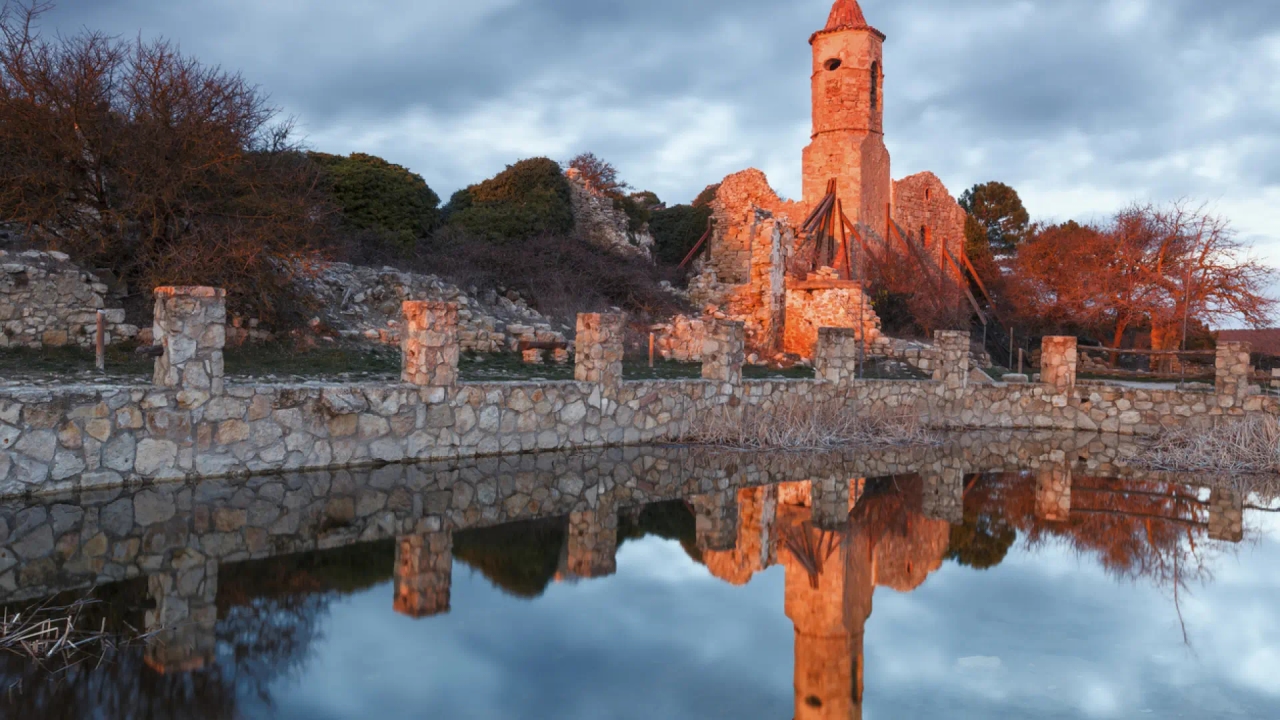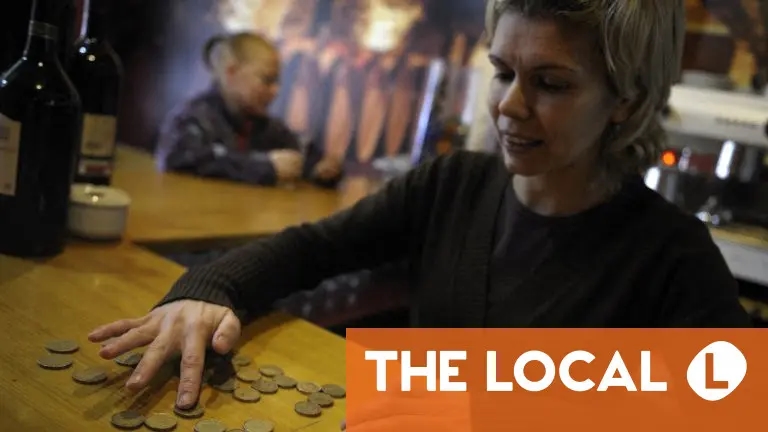She convinced her husband to spend the summer in the "Caribbean of Buenos Aires" and they ended up opening their own inn facing the sea.

The tranquility in Stella's voice as she describes Los Pocitos is a true reflection of the peace and harmony one feels when setting foot in this coastal town in the province of Buenos Aires, which is part of the Bahía San Blas Multiple Use Nature Reserve.
With clear sand and turquoise waters —they call it the “Caribbean of Buenos Aires” for a reason—this beach tempts you to stay and forget about the stress of the city.
Something similar happened to Stella Breit and Aldo González , who chose this seaside resort 900 kilometers from Buenos Aires as their corner of the world.
 Beach view. Photo courtesy of Stella Breit and Aldo González
Beach view. Photo courtesy of Stella Breit and Aldo GonzálezShe (who was a teacher in her town, Stroeder, and later a municipal employee in Viedma, the closest city to Los Pocitos) used to spend the summer there with her family when she was a child , and dreamed of returning to her husband.
The desire and the insistence paid off: one summer vacation, as soon as they set foot on the soil of Los Pocitos, he fell in love with its charm .
Stella (70) and Aldo (63) settled in Los Pocitos about twenty years ago, when there were barely twenty families living there (today there are about sixty families in winter and one hundred in summer).
 Stella and Aldo, by the sea. Photo courtesy of Stella Breit and Aldo González
Stella and Aldo, by the sea. Photo courtesy of Stella Breit and Aldo González“There was an inn and a campground. Over the years, mains water (which isn't potable), along with an elementary school and a kindergarten, arrived,” she says. She continues: “ We had our house in Viedma , 95 kilometers away, and we would come on weekends and during summer vacations . In the meantime, each of us had our own jobs there. And in my free time, I took advantage of the opportunity to study to become a tour guide.”
The move was gradual and difficult : “First we came in a tent, then we rented a house, and so, little by little, we made our own,” they say.
Once they had their home, they were inspired to do more. They decided to start a fishing boat business and then open an inn they called Buena Vida, which they now call a perfect match.
 Posada Buena Vida. Photo courtesy of Stella Breit and Aldo González
Posada Buena Vida. Photo courtesy of Stella Breit and Aldo González“We take excursions to the diverse fishing scene (dogfish, sea bass, whiting, and silverside) and to the Culebra Channel . Our boat meets all the safety standards approved by the Argentine Naval Prefecture. When tourists return from fishing, we wait for them at the inn with a cup of coffee and something sweet. They are delighted,” Stella assures.
In Los Pocitos, things are governed by the tides , which means that, as Stella explains, there are times when the sea is far away and it's ideal to explore the extensive, limitless coastline to the north or south.
 The area is characterized by its wide tidal range. Photo courtesy of Stella Breit and Aldo González
The area is characterized by its wide tidal range. Photo courtesy of Stella Breit and Aldo González“Along the way, you can see colonies of flamingos, seagulls, herons, sea turtles, and the sound of the calm sea and gentle waves ,” he describes.
Along the beach, you can also find a large number of oysters, which are the cornerstone of the local cuisine . Stella, for example, prepares them in a tasting menu—pickled in vinaigrette, au gratin, or Milanese—to welcome guests at her inn.
This is no coincidence, because in the first week of January, Los Pocitos celebrates the Oyster Festival , where paella is prepared with this exquisite culinary resource and musical groups play. A must-see during the summer season.
 Oysters, the culinary specialty of Los Pocitos. Photo courtesy of Stella Breit and Aldo González
Oysters, the culinary specialty of Los Pocitos. Photo courtesy of Stella Breit and Aldo GonzálezIts relaxed atmosphere and shallow waters make Los Pocitos an ideal vacation destination for children. You can also teach them how to fish from the pier , for example.
“And if you want to go for a walk one day, 20 km away is San Blas Bay , a very beautiful tourist spot, very busy during the fishing season,” says Stella. He adds, “It has plenty of accommodations and restaurants, and the Naval Prefecture has a headquarters there.” Although the road is gravel, it is always well maintained.
 View of the Buena Vida Inn. Photo courtesy of Stella Breit and Aldo González
View of the Buena Vida Inn. Photo courtesy of Stella Breit and Aldo GonzálezIn addition to Posada Buena Vida, there is a resort called Las Ostras, homestay rentals, two cabin complexes, and a beachfront campground with public restrooms, Wi-Fi, electricity, water, and children's playgrounds.
Los Pocitos also has small markets, a restaurant, an open-air gym, and a first aid room.
The ideal route is to follow the locals' directions, like the ones Stella provides in a simple way: "Coming along RN 3 Sur, at kilometer 889 there is a gravel road detour . As a reference, on the right before getting off, there is a gas station that is currently closed. It's 11 km of passable gravel (low-speed vehicles are recommended to drive slowly), and the last stretch runs along the sea . We locals call it 'The Coastal Road.'"
 Very peaceful in Los Pocitos. Photo courtesy of Stella Breit and Aldo González
Very peaceful in Los Pocitos. Photo courtesy of Stella Breit and Aldo GonzálezThere's also the option of traveling from the south via Carmen de Patagones (80 km), still on National Route 3. "When you reach kilometer 918, you'll come to a roundabout that marks the entrance to the consolidated gravel road. First, you'll pass through a small town called José B. Casas, cross a level crossing, and continue to an abandoned chapel. There, turn left, and after 5 km, you'll reach Los Pocitos," Stella explains. Along the way, it's common to encounter ostriches, hares, herons, and furry wolves .
Clarin





